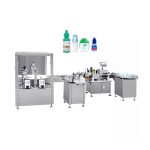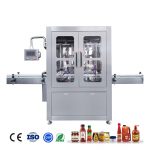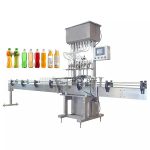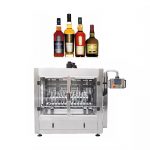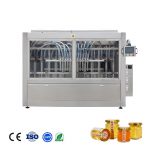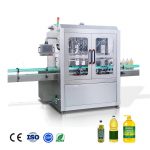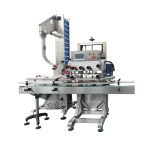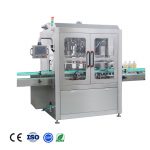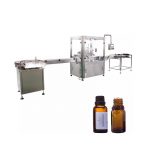What is shampoo filling machine?
A shampoo filling machine is a type of machine used in the packaging industry to fill bottles or containers with shampoo. These machines are designed to accurately and efficiently dispense shampoo into containers of various sizes and shapes. They are typically used in large-scale manufacturing operations, where they can help to reduce labor costs and increase production speed.
Shampoo filling machines typically consist of a hopper that holds the shampoo, a filling mechanism, and a capping system. The hopper is used to store the shampoo before it is dispensed, while the filling mechanism is used to dispense the shampoo into the containers. The capping system is used to seal the containers once they are filled.
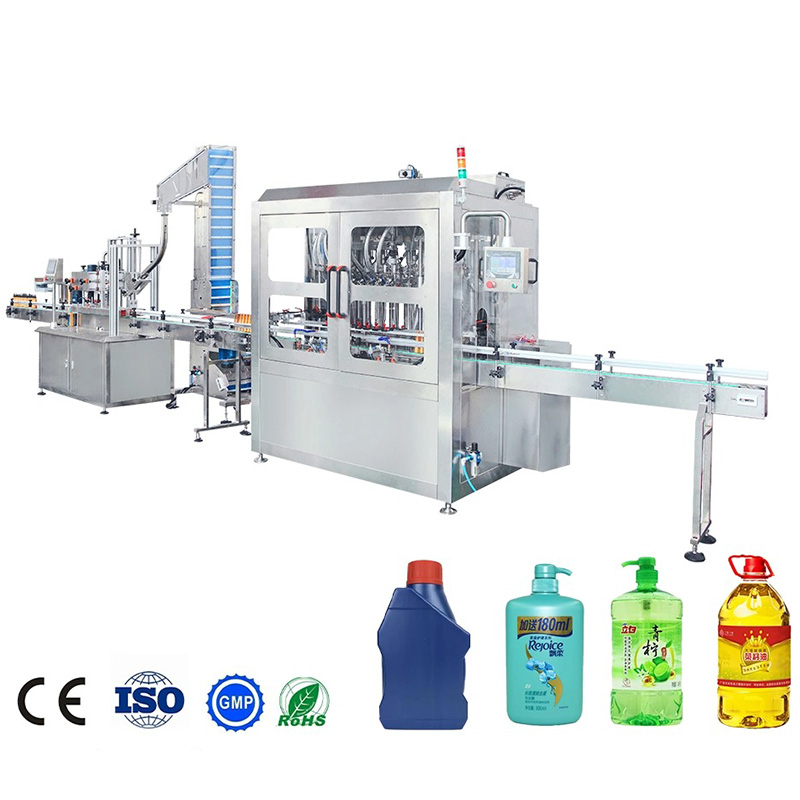
There are several different types of shampoo filling machines, including piston fillers, gravity fillers, and peristaltic fillers. Piston fillers use a piston to dispense the shampoo, while gravity fillers use the force of gravity to fill the containers. Peristaltic fillers use a series of rollers to squeeze the shampoo out of a tube and into the container.
Shampoo filling machines can be operated manually or automatically, depending on the needs of the manufacturer. Automatic shampoo filling machines are typically more efficient and can fill containers at a faster rate, while manual machines are more flexible and can be used for smaller batch sizes.
Overall, shampoo filling machines are an important part of the packaging process in the shampoo manufacturing industry. They help to accurately and efficiently fill bottles and containers with shampoo, allowing manufacturers to produce large quantities of product quickly and cost-effectively.
What are the common packaging shampoo containers?
The most common packaging containers for shampoo are bottles and tubes. Bottles are typically made of plastic or glass, and come in a variety of sizes and shapes. They are often designed with a dispensing cap or pump to make it easy for consumers to use the product. Tubes are also made of plastic or other materials, and are typically squeezed to dispense the shampoo.
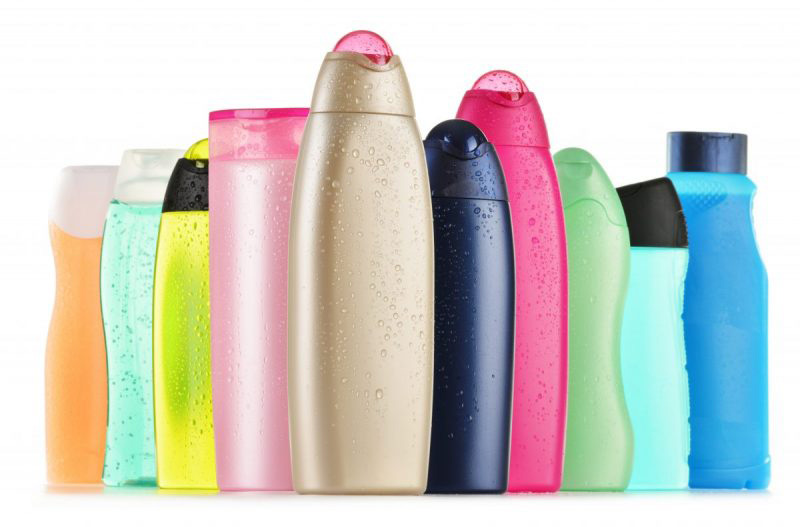
Other packaging containers for shampoo may include sachets, pouches, and cartridges. Sachets are small packets that contain a single dose of shampoo, while pouches are larger and can hold multiple doses. Cartridges are similar to tubes, but are typically used in dispensers that allow for more precise dosing.
In addition to the container itself, shampoo packaging may also include labels, stickers, and other decorative elements to make the product more appealing to consumers. These elements may include branding, product information, and instructions for use.
How to choose shampoo filling machine?
When choosing a shampoo filling machine, there are several factors to consider to ensure that you select the right machine for your needs.
Production capacity:
First, consider the production capacity of the shampoo filling machine. How many bottles or containers do you need to fill per hour or per day? Select a machine with a production capacity that meets your needs.
Filling accuracy:
Accuracy is important when filling bottles or containers with shampoo. Look for a machine with a high filling accuracy to ensure that each container is filled with the correct amount of shampoo.
Type of filling mechanism:
There are several different types of filling mechanisms used in shampoo filling machines, including piston fillers, gravity fillers, and peristaltic fillers. Consider which type of filling mechanism will be most suitable for your needs.
Container size and shape:
Shampoo filling machines can be used with containers of various sizes and shapes. Make sure that the machine you choose is compatible with the containers you plan to use.
Capping system:
The capping system is used to seal the containers once they are filled with shampoo. Look for a machine with a reliable and efficient capping system to ensure that the containers are properly sealed.
Automatic or manual operation:
Shampoo filling machines can be operated either manually or automatically. Automatic machines are typically more efficient and can fill containers at a faster rate, but may be more expensive. Manual machines are more flexible and can be used for smaller batch sizes, but may be slower. Consider your needs and budget when deciding between automatic and manual operation.
Ease of use and maintenance:
Look for a shampoo filling machine that is easy to operate and maintain. A user-friendly machine will be less likely to experience downtime, and will be easier to troubleshoot if problems do arise.
Price:
The price of the shampoo filling machine is also an important factor to consider. Determine your budget and look for a machine that offers the features and capabilities you need at a price that fits within your budget.
In summary, when choosing a shampoo filling machine, consider factors such as production capacity, filling accuracy, type of filling mechanism, container size and shape, capping system, automatic or manual operation, ease of use and maintenance, and price. By considering these factors, you can select the right shampoo filling machine for your needs.
How does the shampoo filling machine work?
A shampoo filling machine is a type of machine used in the packaging industry to fill bottles or containers with shampoo. These machines are designed to accurately and efficiently dispense shampoo into containers of various sizes and shapes.
The shampoo filling machine typically consists of a hopper that holds the shampoo, a filling mechanism, and a capping system. The hopper is used to store the shampoo before it is dispensed, while the filling mechanism is used to dispense the shampoo into the containers. The capping system is used to seal the containers once they are filled.
There are several different types of shampoo filling machines, including piston fillers, gravity fillers, and peristaltic fillers. Piston fillers use a piston to dispense the shampoo, while gravity fillers use the force of gravity to fill the containers. Peristaltic fillers use a series of rollers to squeeze the shampoo out of a tube and into the container.
The exact operation of a shampoo filling machine will depend on the specific type of machine being used. Here is a general overview of how a shampoo filling machine works:
- The operator places empty containers on the filling machine.
- The shampoo is poured into the hopper of the filling machine.
- The filling mechanism dispenses the shampoo into the containers. The amount of shampoo dispensed into each container is carefully controlled to ensure accuracy.
- The capping system seals the containers once they are filled.
- The filled and sealed containers are then removed from the filling machine and moved to the next step in the packaging process.
Shampoo filling machines can be operated either manually or automatically. Automatic machines are typically more efficient and can fill containers at a faster rate, but may be more expensive. Manual machines are more flexible and can be used for smaller batch sizes, but may be slower.
Overall, the shampoo filling machine is an important part of the packaging process in the shampoo manufacturing industry. It helps to accurately and efficiently fill bottles and containers with shampoo, allowing manufacturers to produce large quantities of product quickly and cost-effectively.
What are the components of shampoo filling machine?
A shampoo filling machine is a type of machine used in the packaging industry to fill bottles or containers with shampoo. These machines typically consist of several key components, including a hopper, filling mechanism, capping system, and controls.
Hopper:
The hopper is a container used to hold the shampoo before it is dispensed into the bottles or containers. The hopper is typically located at the top of the filling machine, and is designed to hold a large quantity of shampoo.
Filling mechanism:
The filling mechanism is the part of the machine that dispenses the shampoo into the containers. There are several different types of filling mechanisms used in shampoo filling machines, including piston fillers, gravity fillers, and peristaltic fillers. Each type of filling mechanism has its own unique advantages and disadvantages.
Capping system:
The capping system is used to seal the containers once they are filled with shampoo. The capping system typically consists of a series of mechanical components that apply pressure to the cap to secure it onto the container.
Controls:
The controls are used to operate the shampoo filling machine. These may include buttons, switches, or a touch screen panel, depending on the specific model of machine. The controls allow the operator to adjust the settings of the machine, start and stop the filling process, and monitor the machine's performance.
In addition to these core components, shampoo filling machines may also include additional features such as conveyor belts, weight scales, and labeling systems. Conveyor belts are used to move the containers through the filling machine, while weight scales are used to measure the amount of shampoo dispensed into each container. Labeling systems are used to apply labels or stickers to the containers once they are filled and sealed.
Overall, the components of a shampoo filling machine work together to accurately and efficiently dispense shampoo into containers of various sizes and shapes. By carefully selecting and maintaining these components, manufacturers can ensure that their shampoo filling machine operates at peak performance.
What are the advantages of shampoo filling machine?
A shampoo filling machine is a type of machine used in the packaging industry to fill bottles or containers with shampoo. These machines offer several key advantages over manual filling methods, including increased accuracy, speed, and efficiency.
Increased accuracy:
One of the main advantages of using a shampoo filling machine is increased accuracy. These machines are designed to dispense shampoo into containers with a high degree of accuracy, ensuring that each container is filled with the correct amount of shampoo. This is particularly important in the shampoo manufacturing industry, where consistency is crucial to the quality of the product.
Increased speed:
Another advantage of using a shampoo filling machine is increased speed. These machines can fill containers at a much faster rate than manual filling methods, allowing manufacturers to produce large quantities of shampoo quickly and efficiently. This can help to reduce labor costs and increase production speed.
Increased efficiency:
Shampoo filling machines are also more efficient than manual filling methods. These machines are designed to minimize product waste and ensure that the maximum amount of shampoo is dispensed into each container. This can help to reduce the overall cost of production and increase profitability.
Improved consistency:
In addition to increased accuracy, shampoo filling machines can also help to improve the overall consistency of the product. By using a machine to fill the containers, manufacturers can ensure that each batch of shampoo is filled with the same amount of product, resulting in a more consistent product overall.
Reduced labor costs:
As mentioned above, using a shampoo filling machine can help to reduce labor costs. These machines can fill containers at a faster rate than manual filling methods, allowing manufacturers to produce more product with fewer workers. This can help to lower labor costs and increase profitability.
In summary, the advantages of using a shampoo filling machine include increased accuracy, speed, and efficiency, improved consistency, and reduced labor costs. These benefits can help shampoo manufacturers to produce high-quality products at a lower cost, increasing their profitability and competitiveness in the market.


